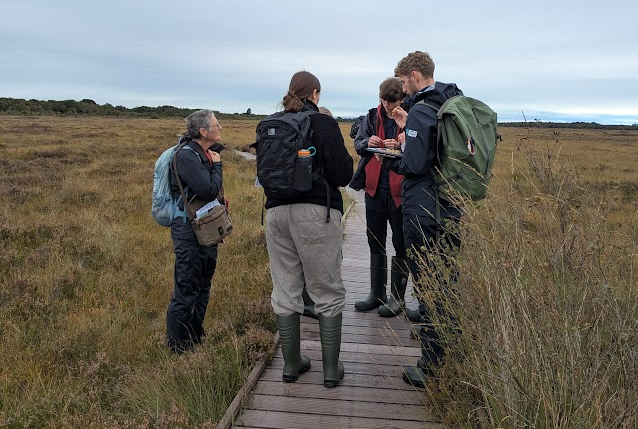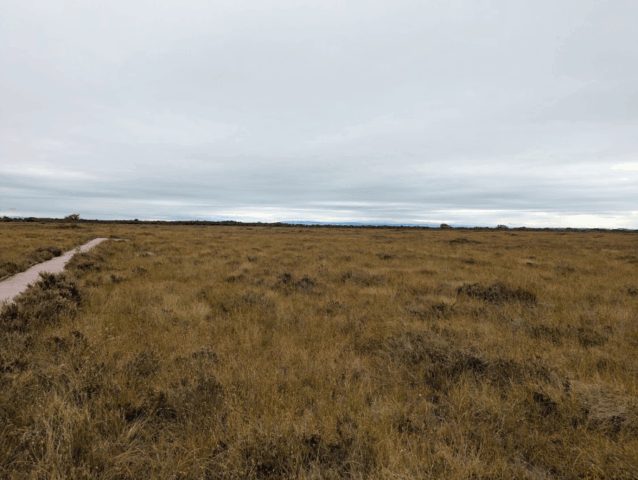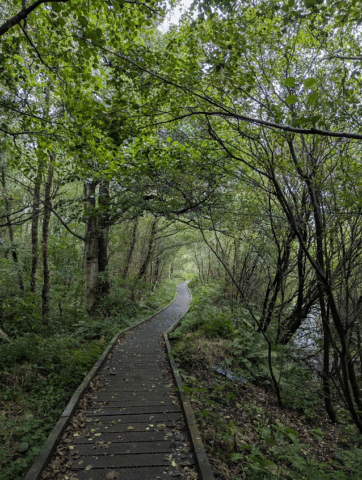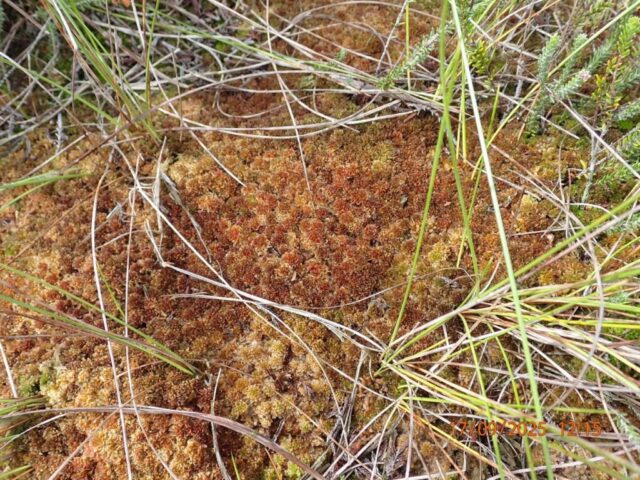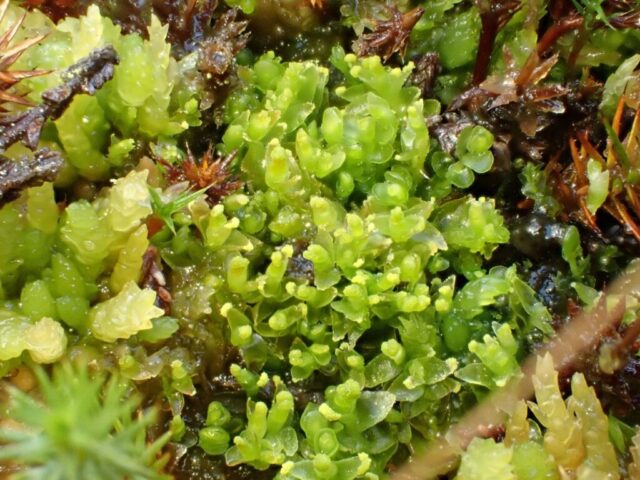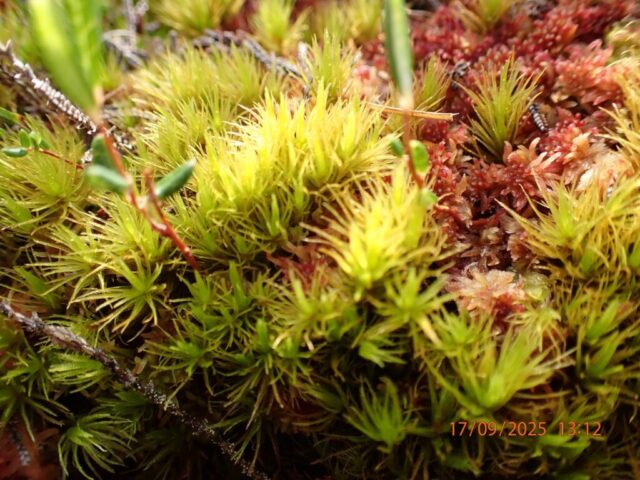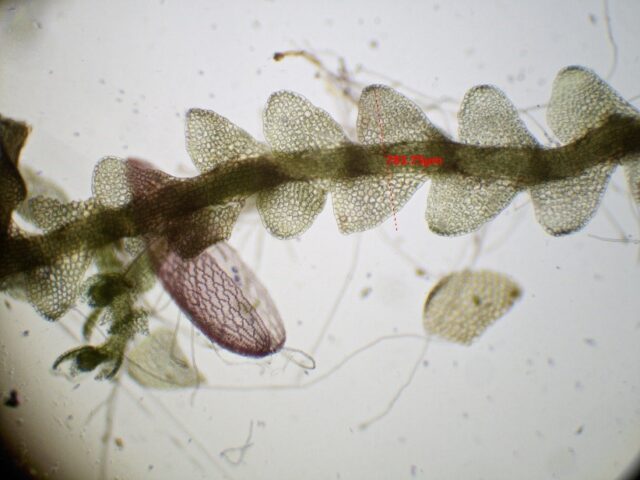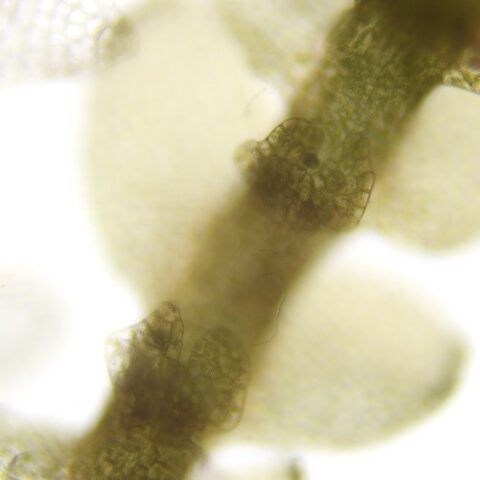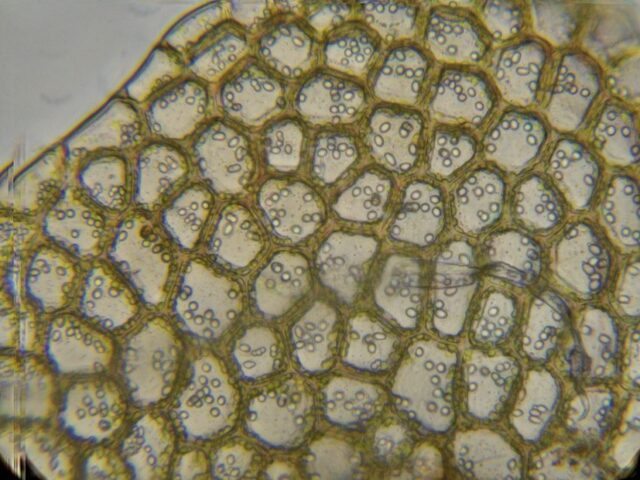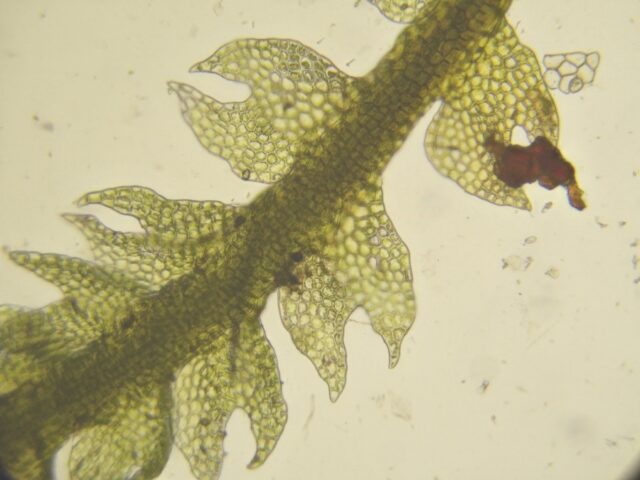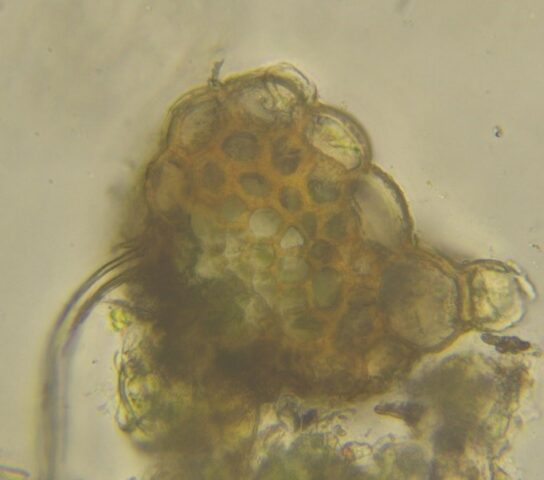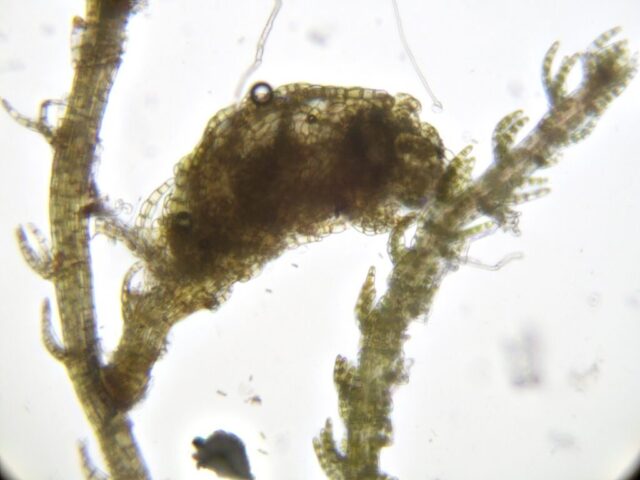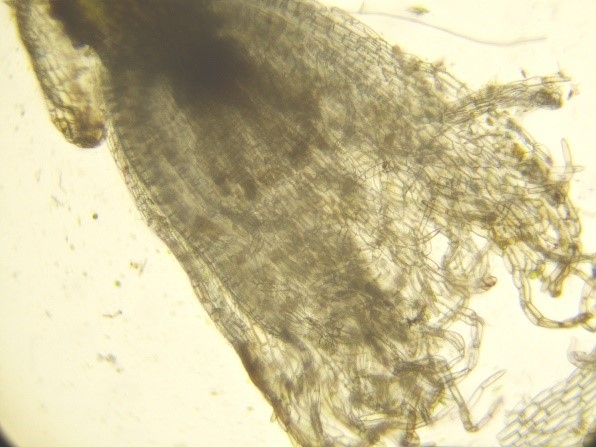Our September trip was to Glasson Moss with the aim of enjoying some sphagnum practice at one of the best examples of a lowland raised bog in Cumbria (and perhaps all of England!). Three group members (Josie, Ryan and Clare) were joined by the West Cumbria Rivers Trust (WCRT) and their cohort of new apprentices, who, not three days into their roles, were met with the challenging task of distinguishing one sphagnum species from another.
We started by reviewing the 7 sphagnum sections (or 6, depending on whether you take out Spaghnum tenellum into its own group or not!) and understanding the key characteristics that are diagnostic for identification. We examined the sizes of cortexes, fascicle numbers, and stem leaf shapes, and discussed the role of colour and habitat for clues towards what species might be present in areas of different water influences. Autumn is the best time of year to visit bog sites; the sphagnum colours are their strongest, and this really could be seen in the vibrant deep red of Sphagnum medium, a key indicator for healthy ombrotrophic (rain-fed) sites. Many sphagnum samples can only be truly confirmed under a microscope, so going to a site like Glasson with well-known species lists and grid references was a great way to discuss field characteristics of rarer species such as Sphagnum pulcrum and Sphagnum fuscum.
We headed into the wet woodland towards the north of the site, providing both a rain-sheltered lunch spot and some species diversity for recording practice. Here, the apprentices were introduced to epiphytes (both of the vascular and non-vascular variety) with some nice patches of Metzgeria violacea and Radula complanata. We were also able to compare some large versions of Sphagnum palustre and Sphagnum squarrosum to really get an idea of leaf shape and form, comparing the hooded-tips to squarrose leaves.
After lunch, the apprentices went their own way to have a quick identification practice while we went further out onto the bog to look for some of the rarer species. We managed to find some mounds of brownish Sphagnum and spent some time discussing whether it was really S. fuscum or just a brownish example of S. capillifolium. On microscopical examination later it did prove to be S. fuscum. We also found a small patch of the very rare Dicranum undulatum, and some Sphagnum patches that had lots of tiny liverworts growing through. As well as the common Calypogeia fissa and Cephalozia connivens, we were pleased to confirm Calypogeia sphagnicola (with mainly unsegmented oil bodies, compared to multiple-segmented in C. fissa) in the first find at this site for more than 50 years, and Cephalozia macrostachys, with small cells and very distinctive yellow cell walls in stem cross-sections. This species was also last recorded here in the 1950s. Also quite common across the bog, growing on Sphagnum, were Odontoschisma Sphagni and Kurzia pauciflora, including some lovely fertile examples with very ciliate perianths as well as male shoots. In one area there were healthy patches of Mylia anomala growing through the sphagnum.
As well as these interesting liverworts, we were able to confirm Sphagnum capillifolium, S. compactum,S. cuspidatum, S. fimbriatum, S. fuscum, S. medium, S. palustre, S. papillosum, S. pulchrum, S. rubellum, S. squarrosum, S. subnitens and S. tenellum.
This trip to Glasson provided a great opportunity for the group to work alongside the WCRT and upskill some new ecologists, as well as refreshing some quite rusty sphagnum knowledge among the regular team! Thanks to all those that attended.
Text and photos: Josie Niemira and Clare Shaw
